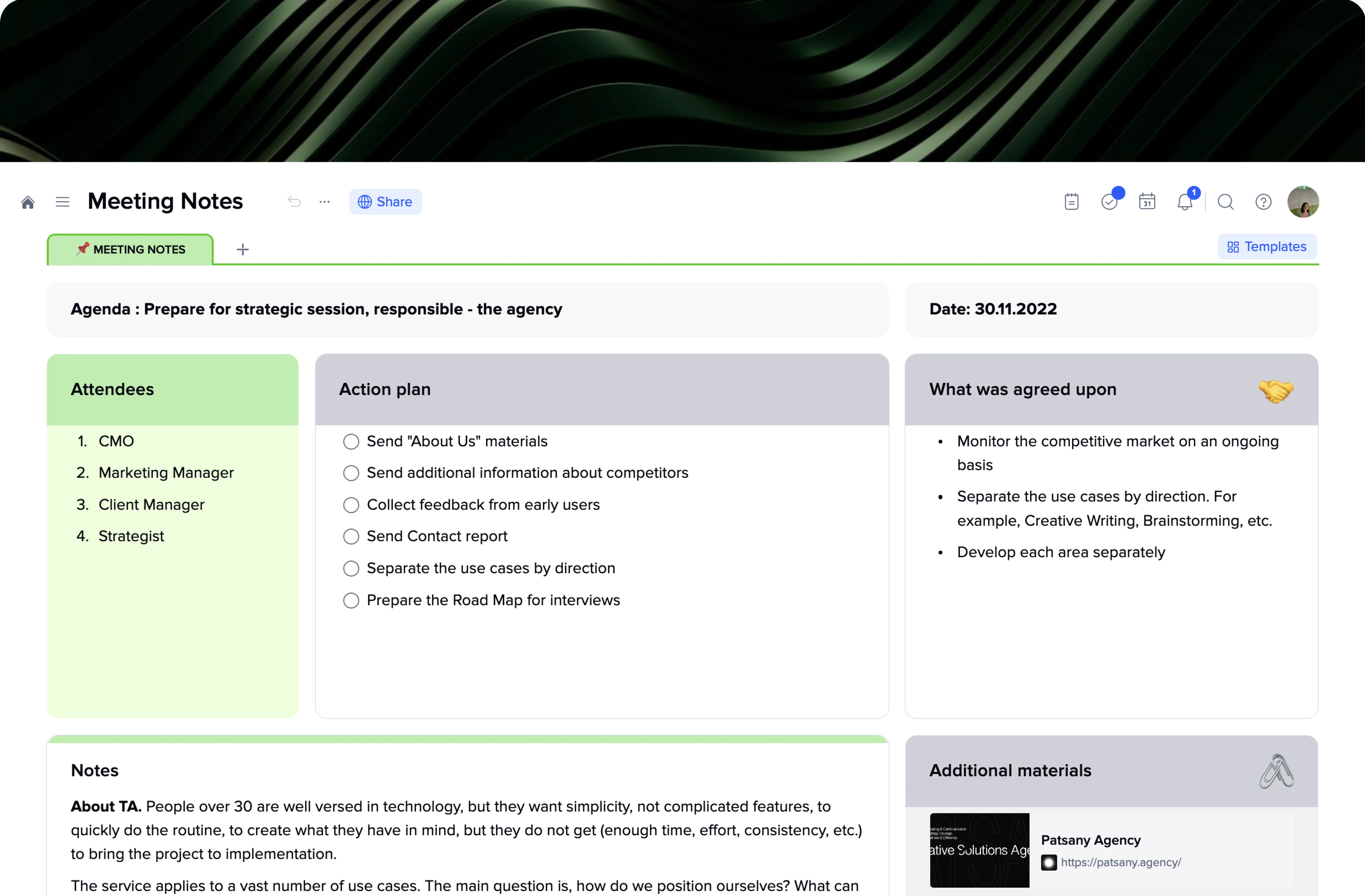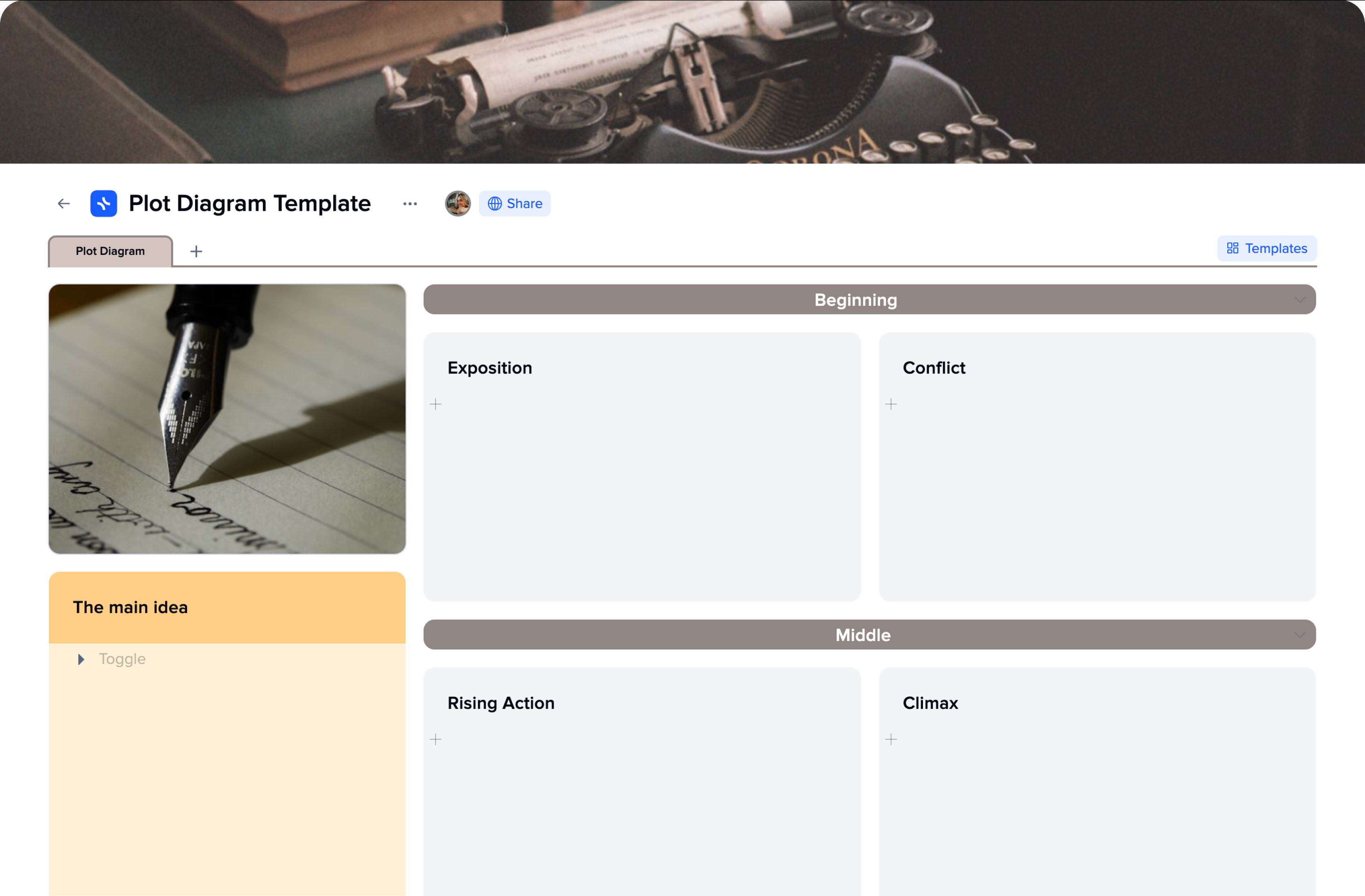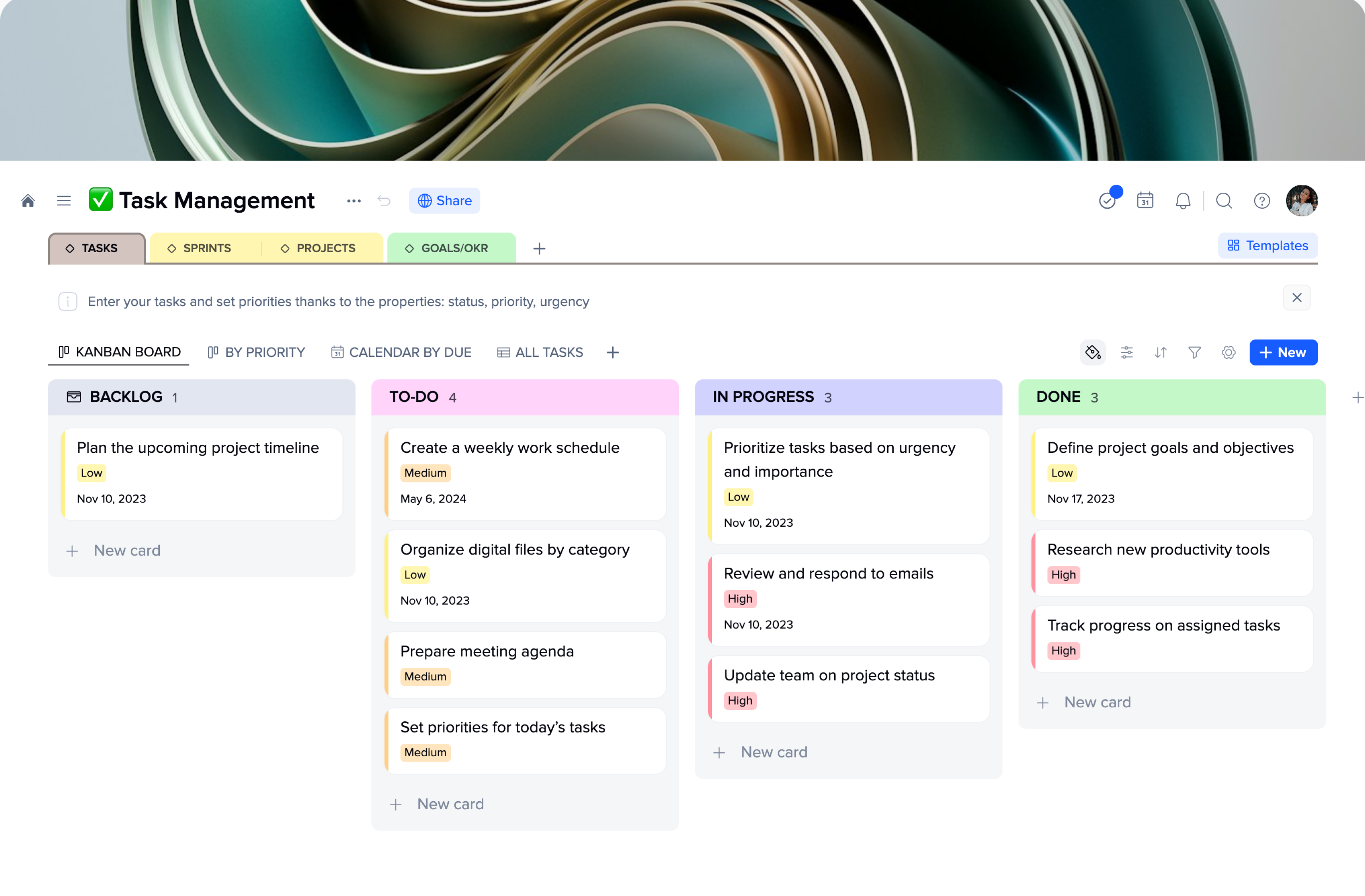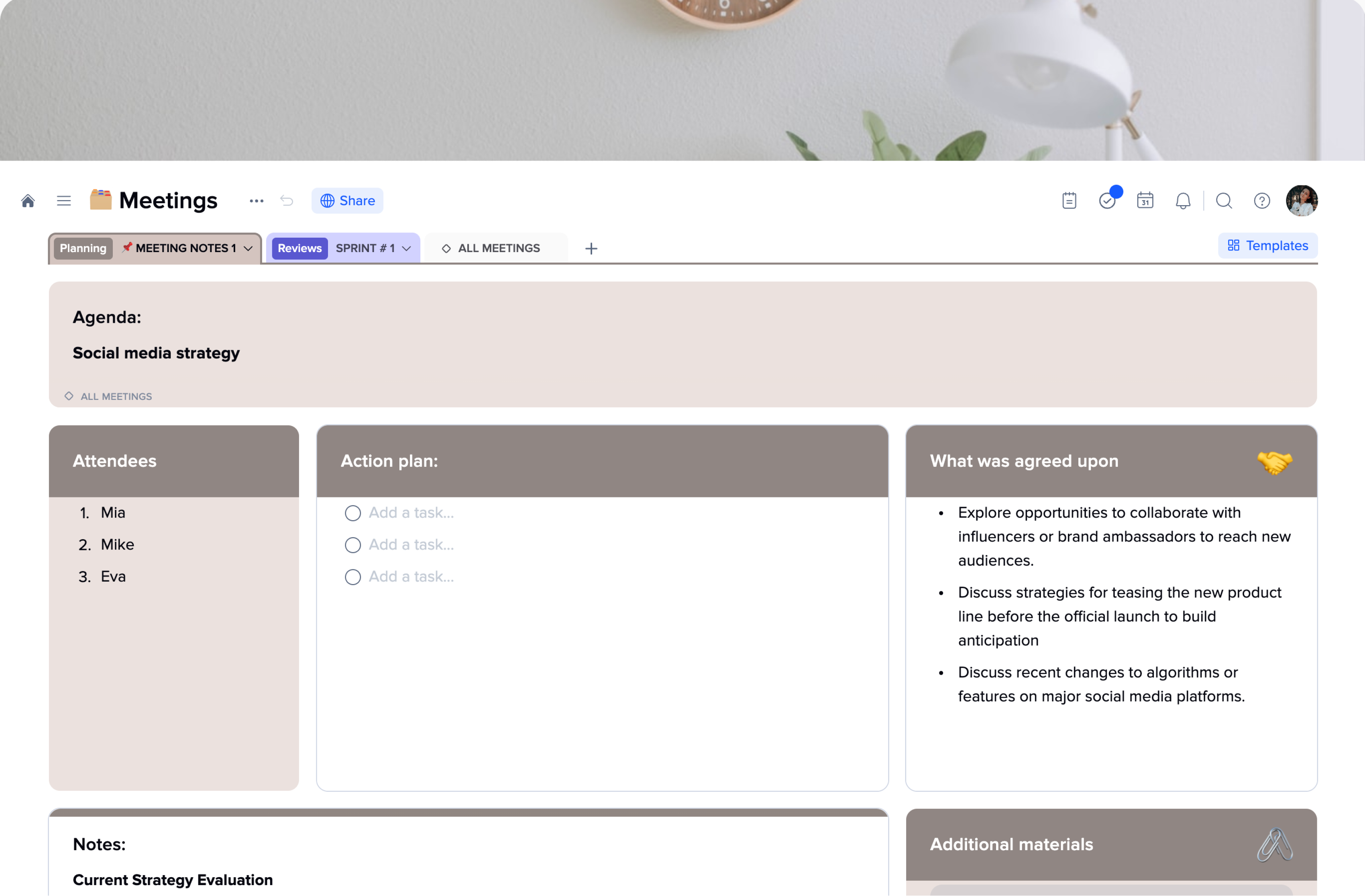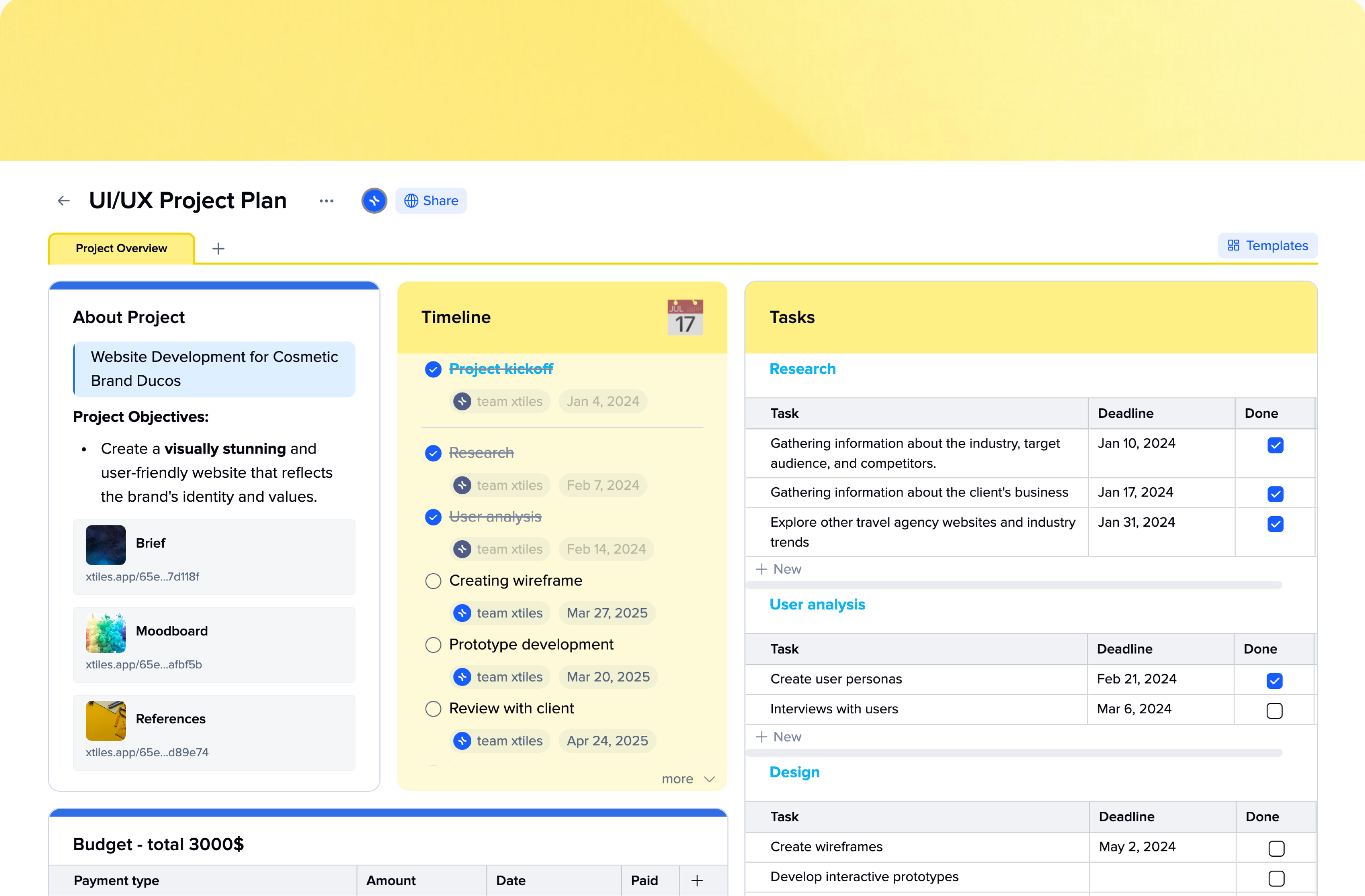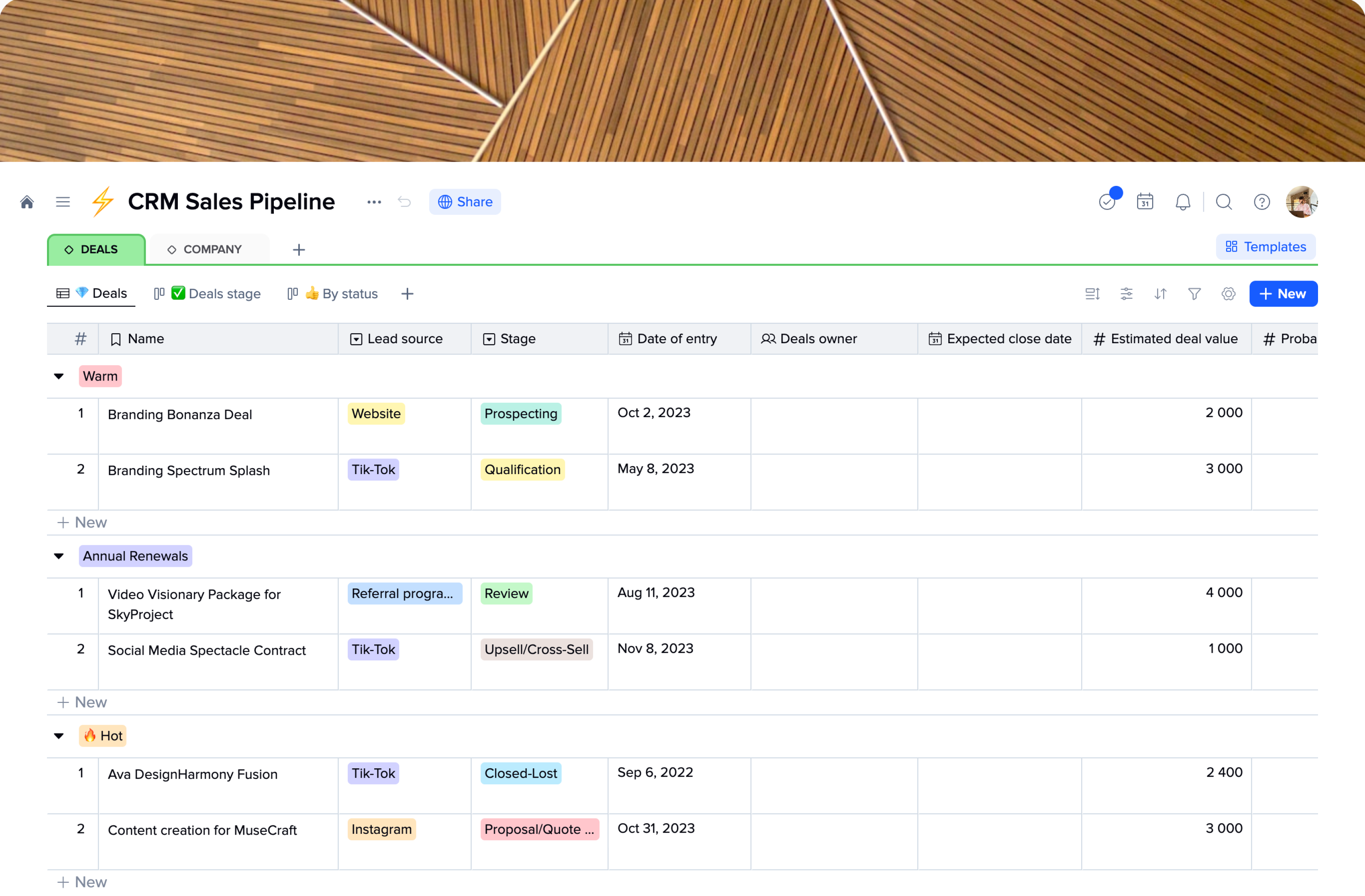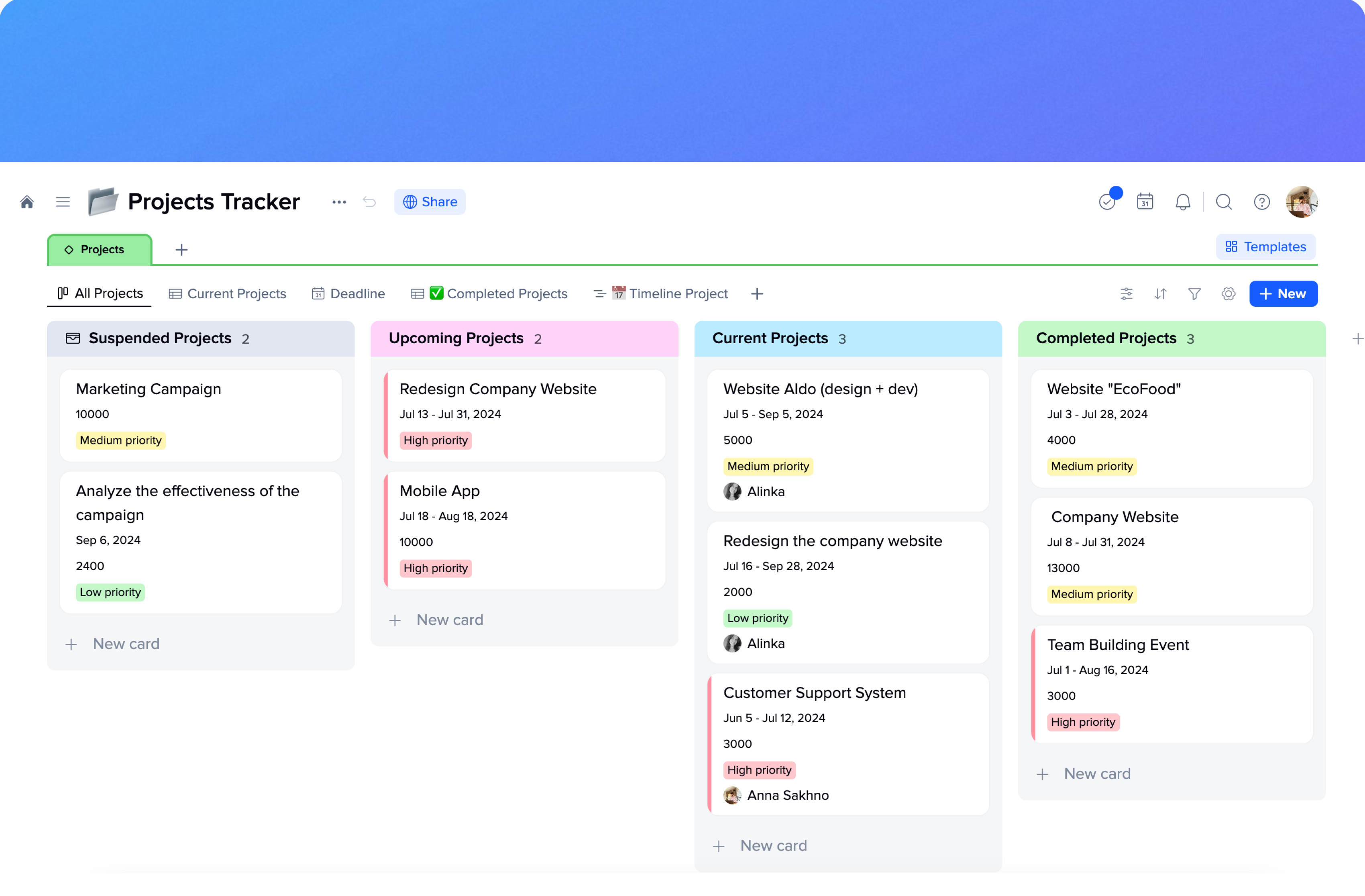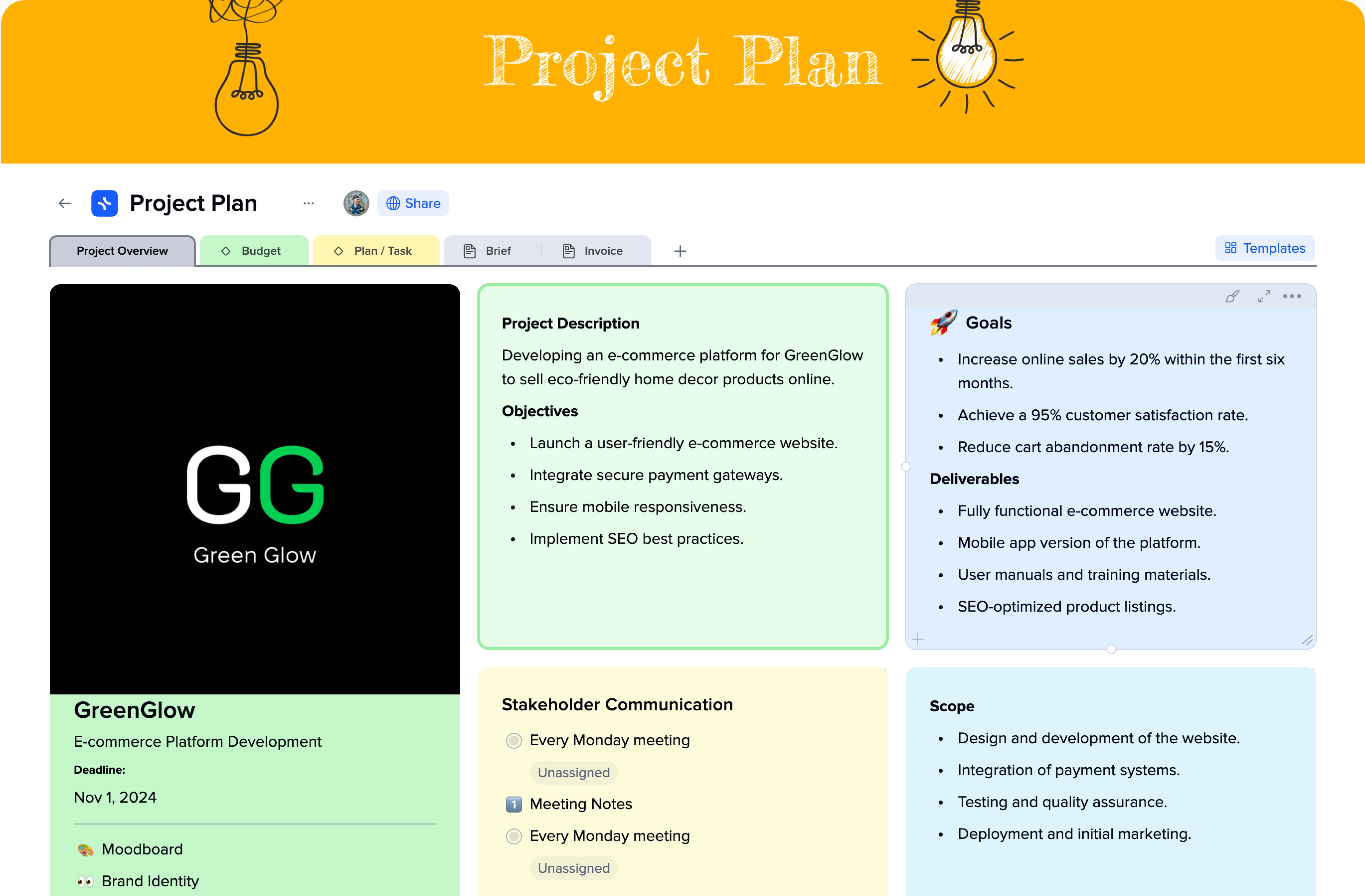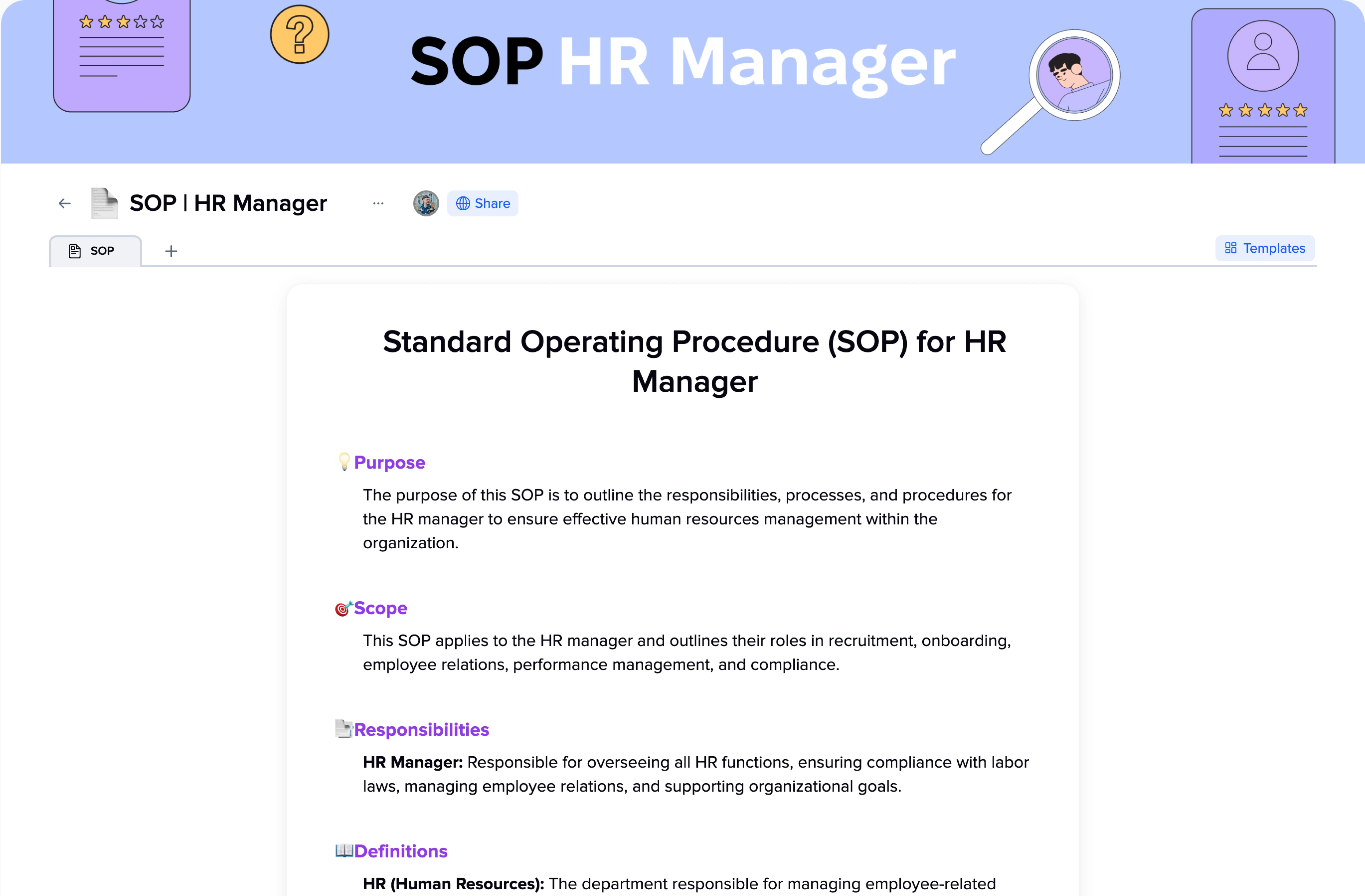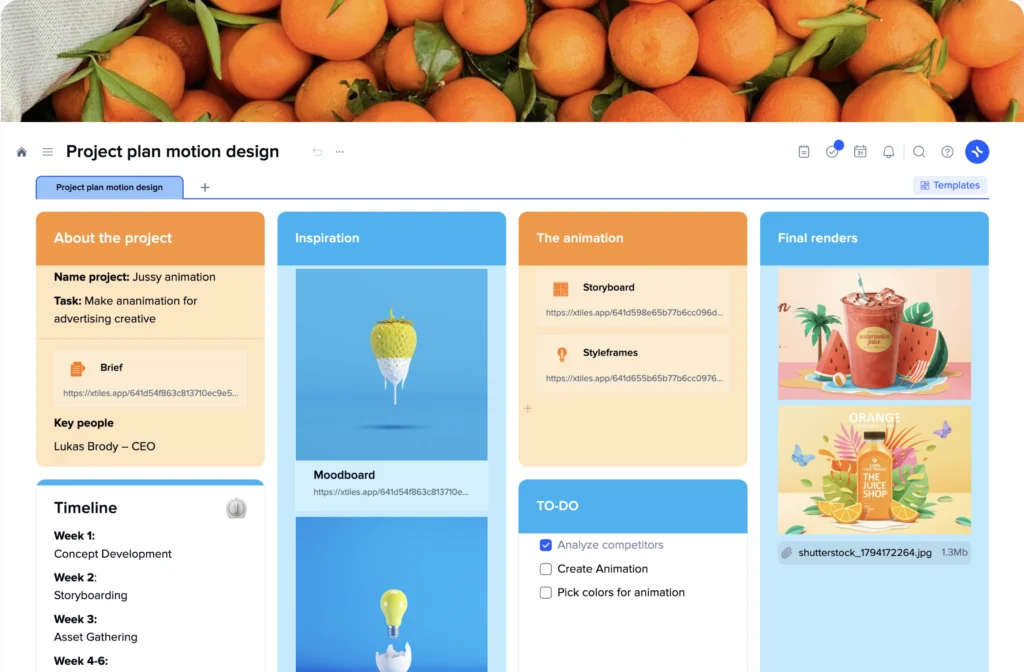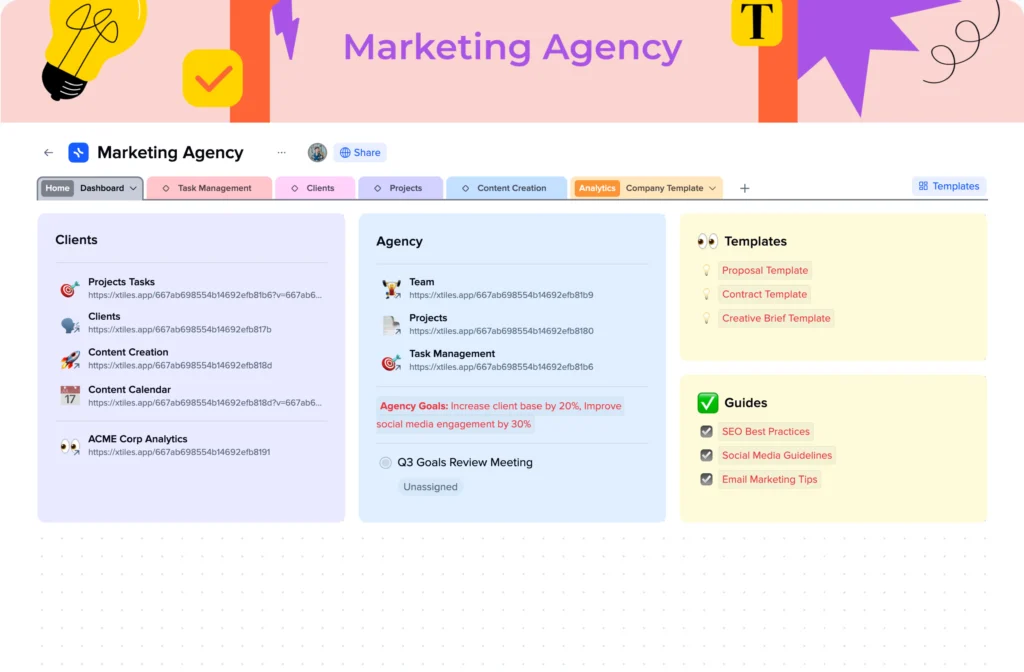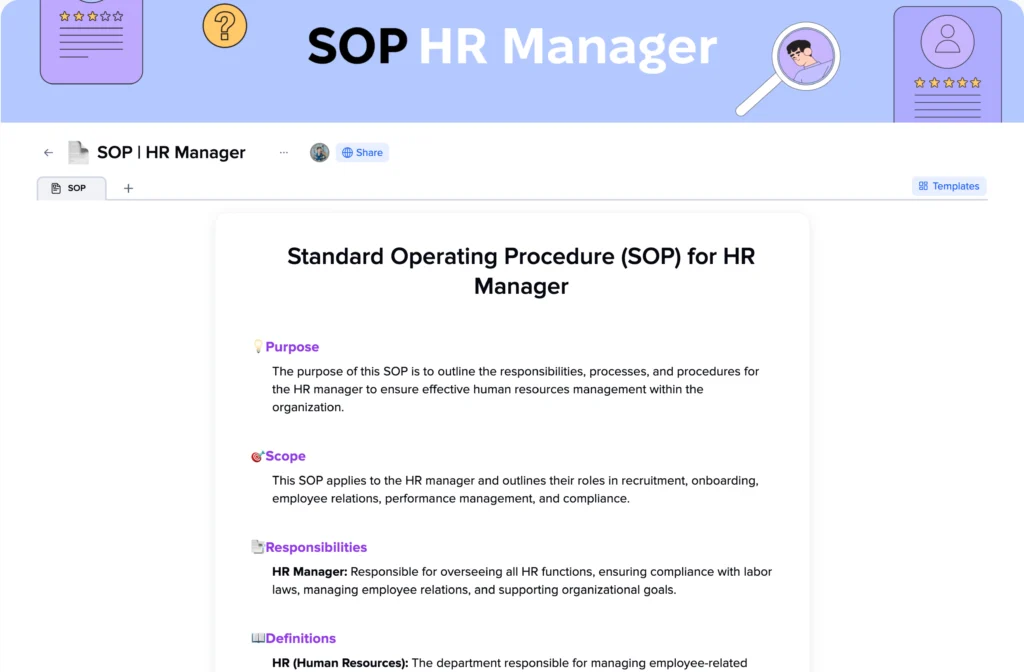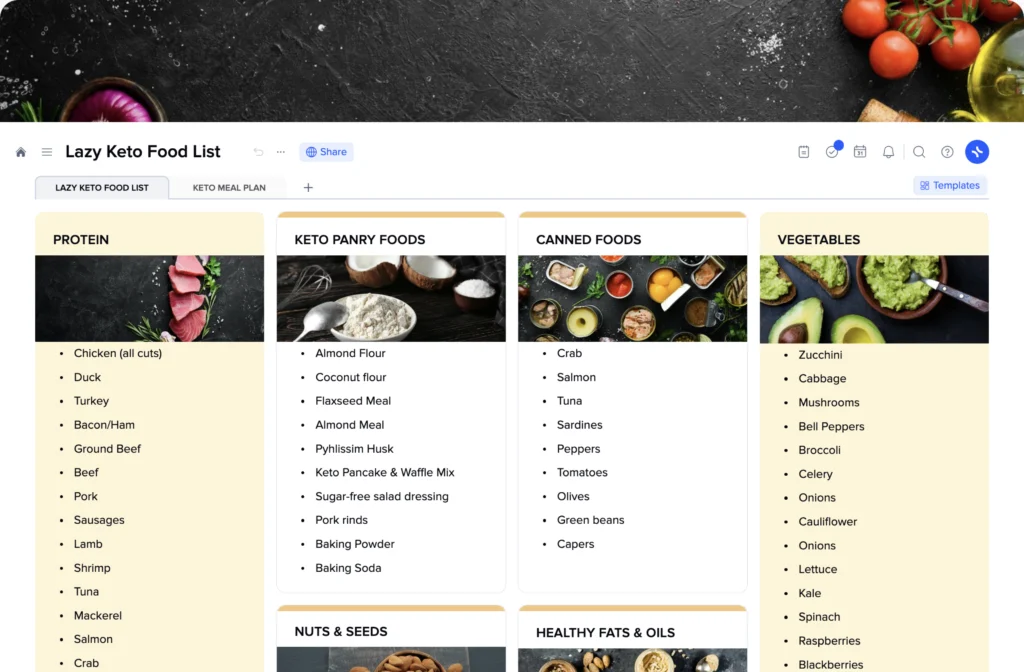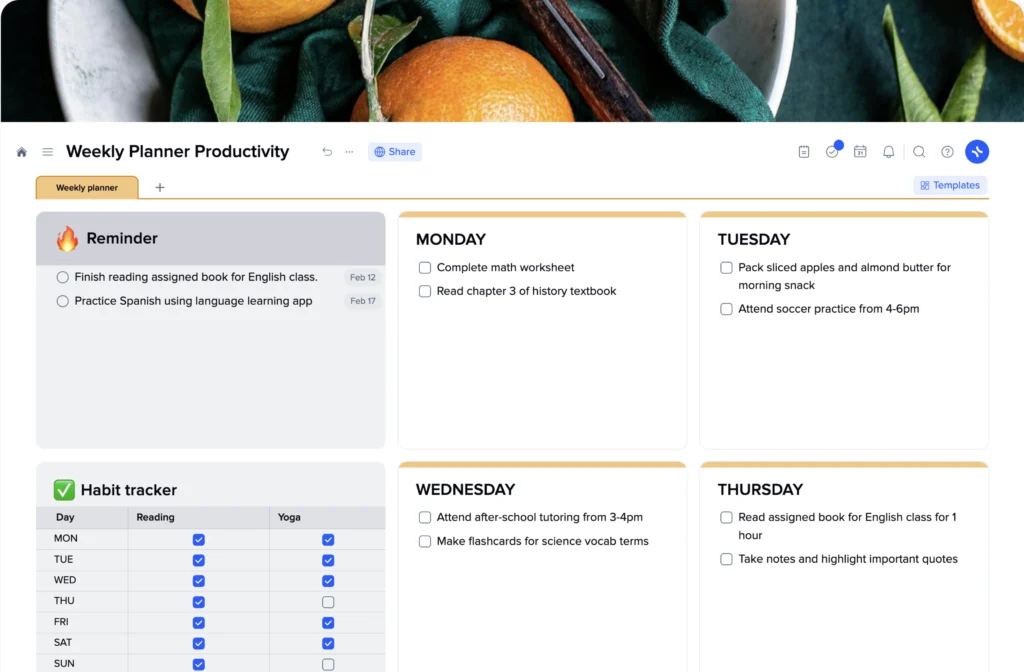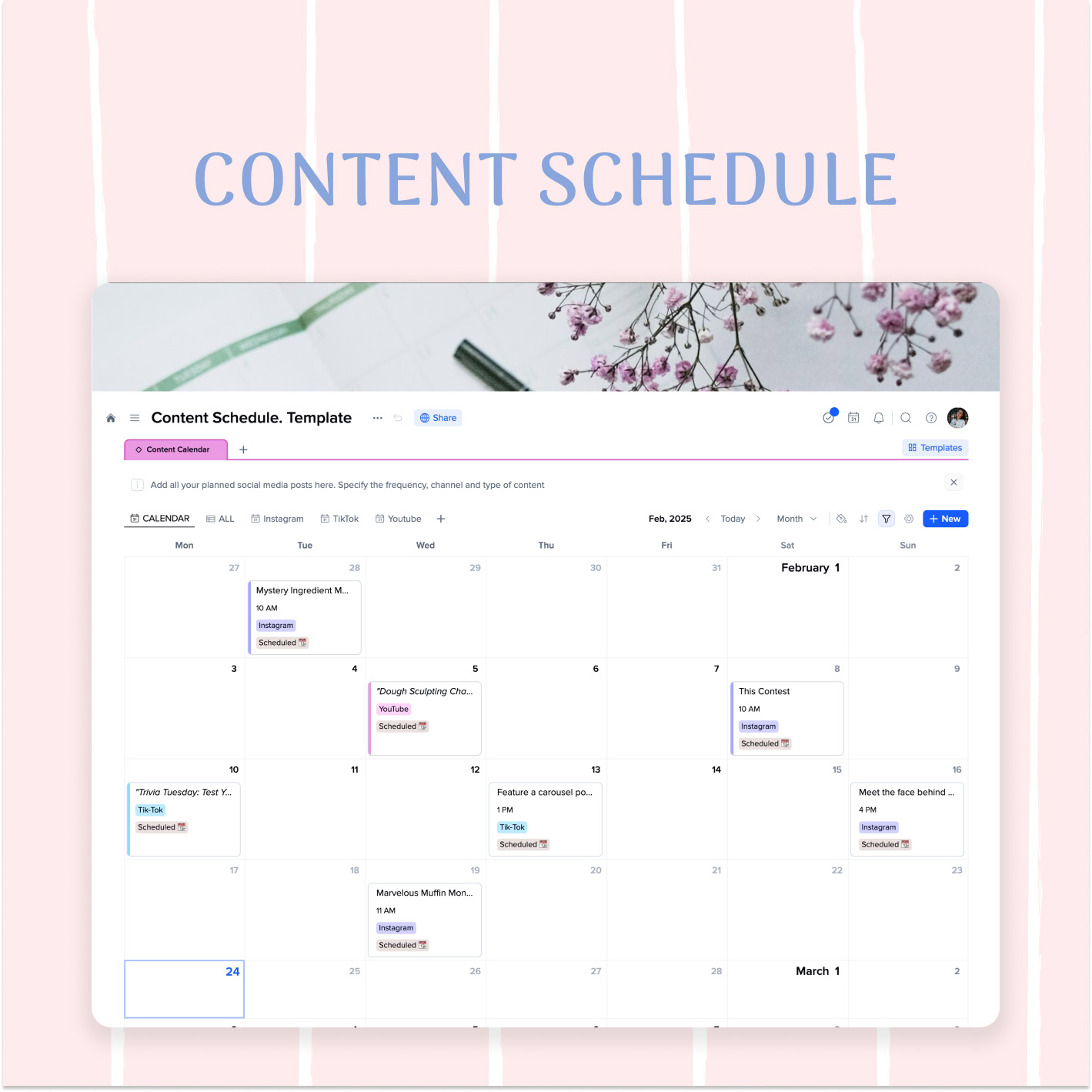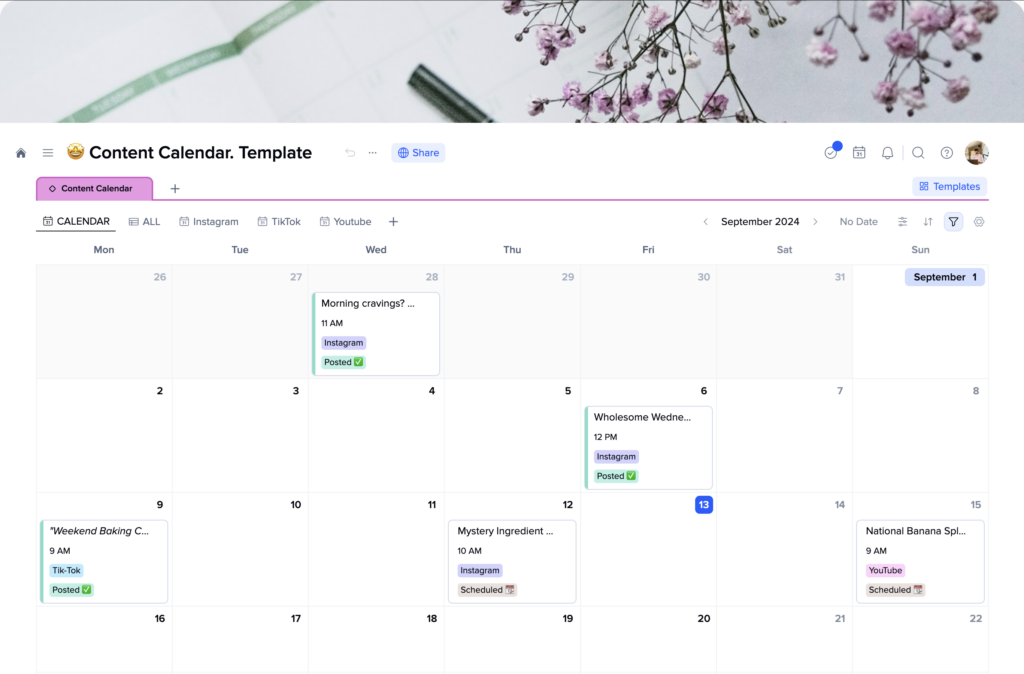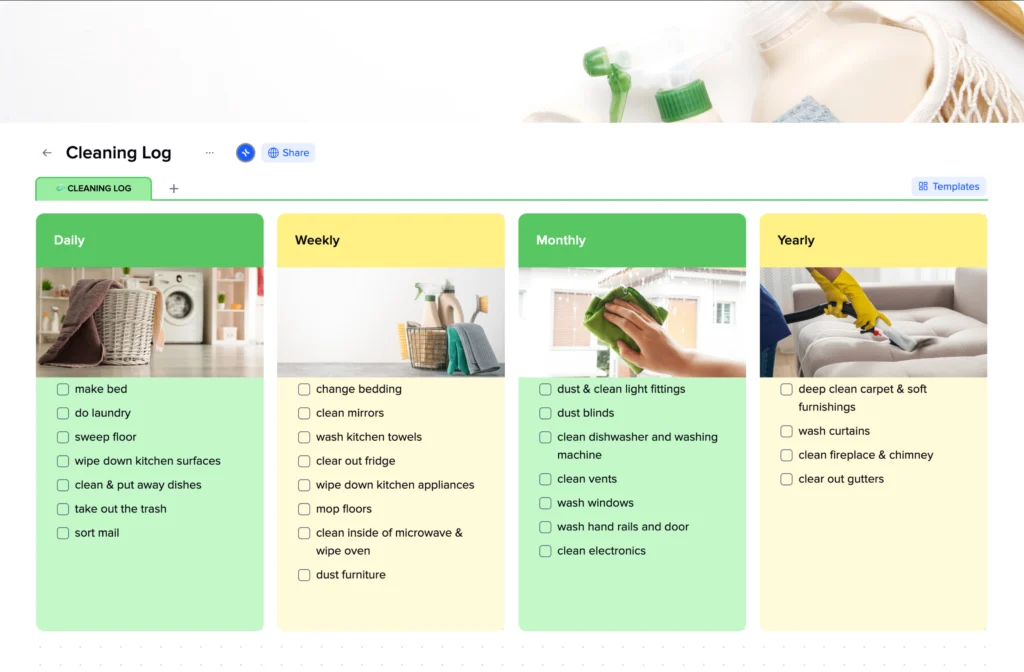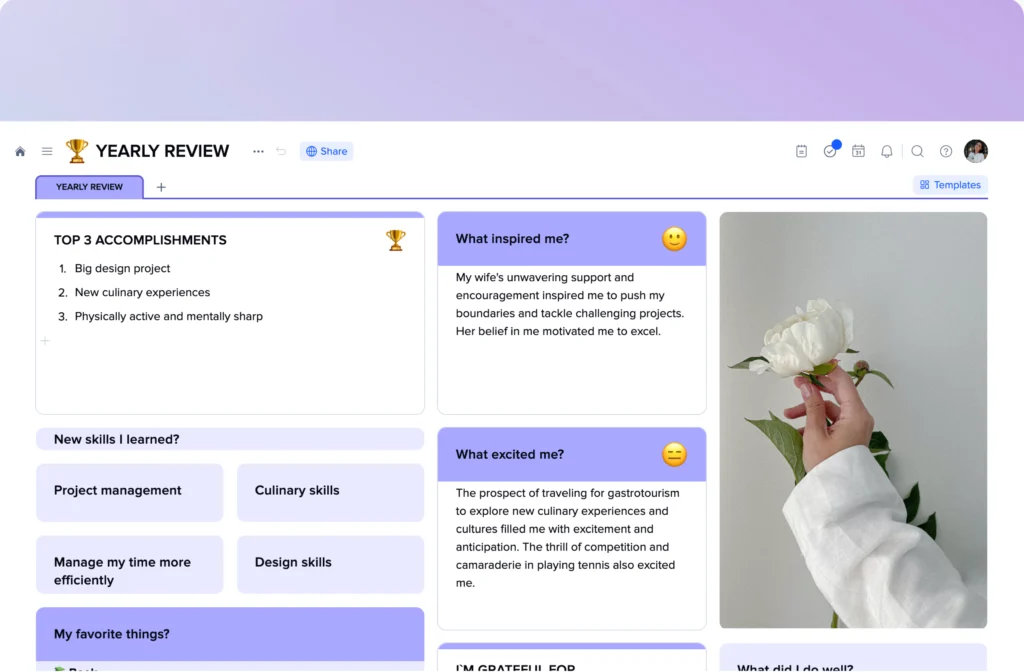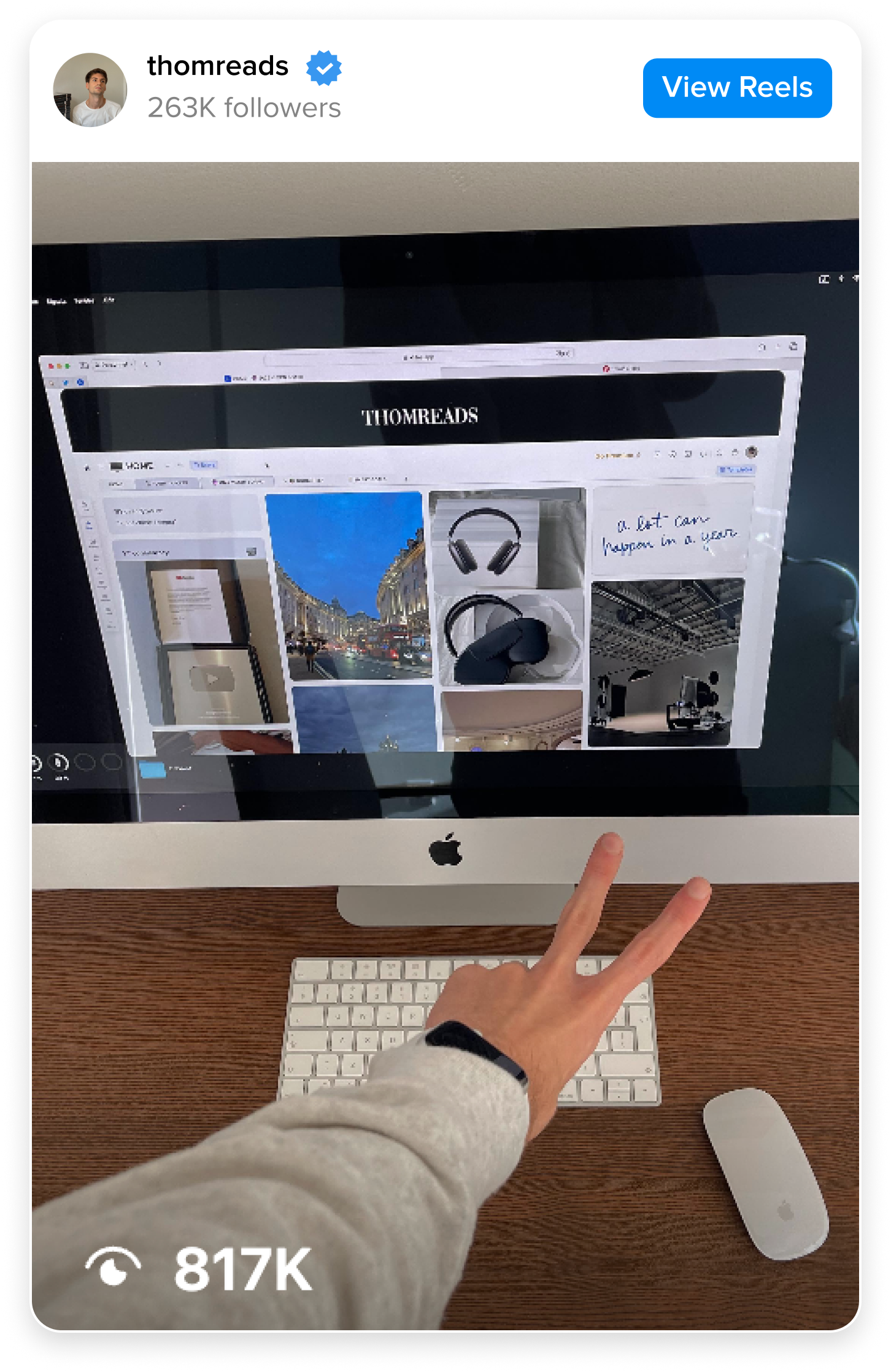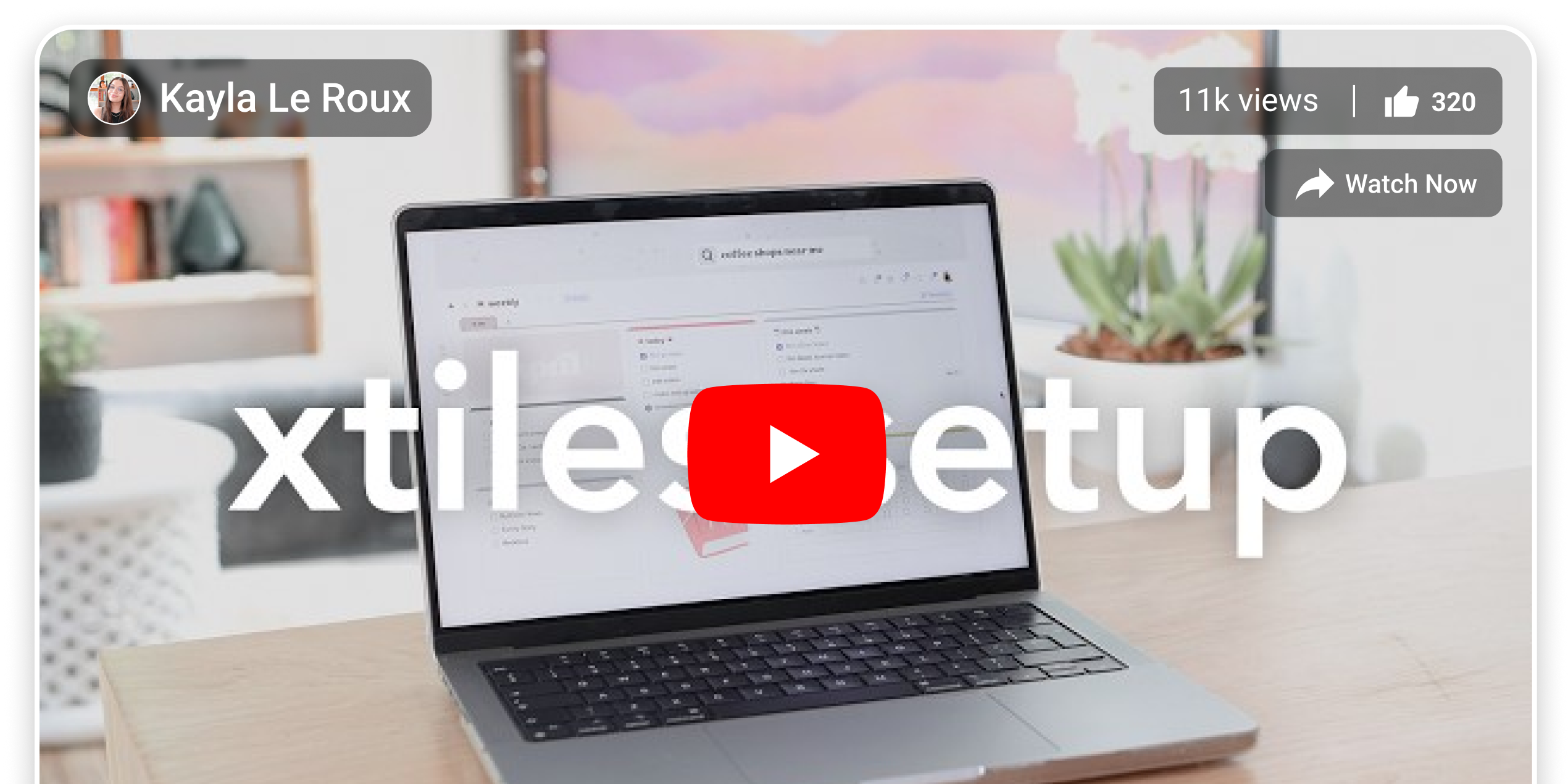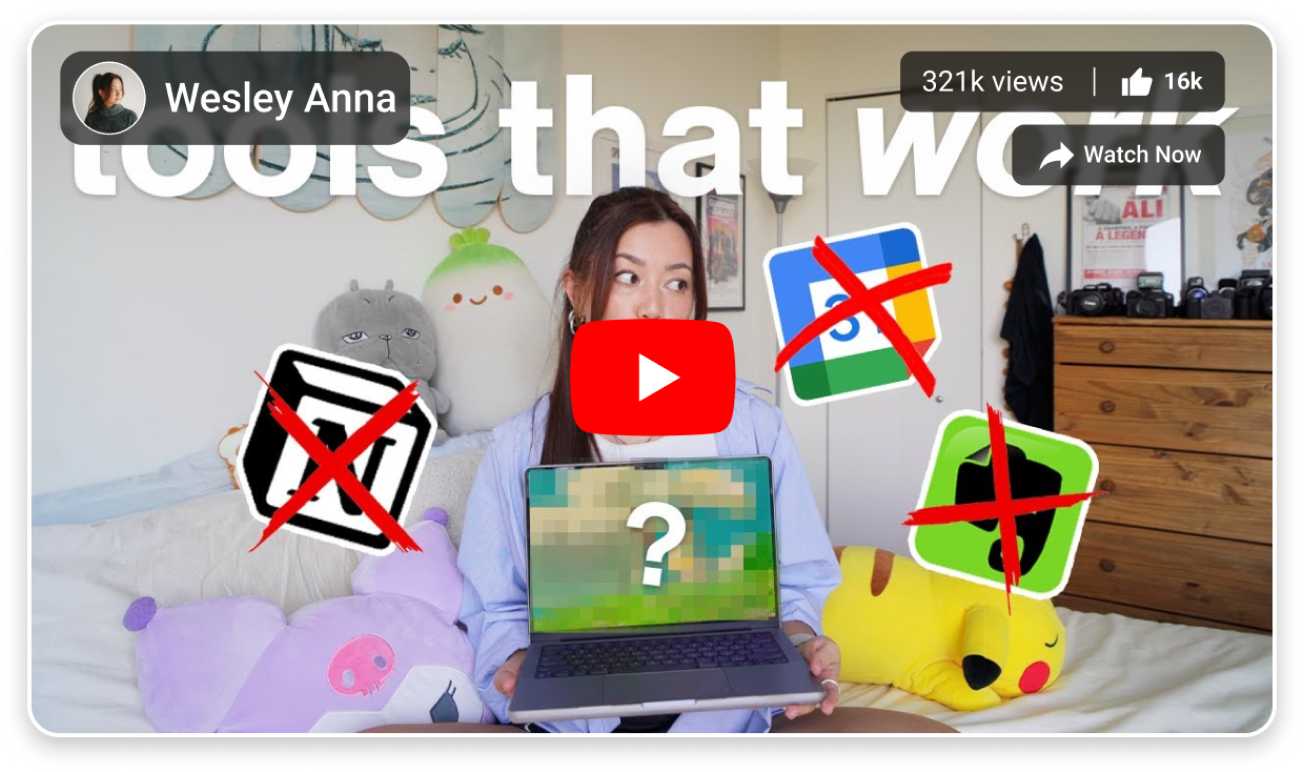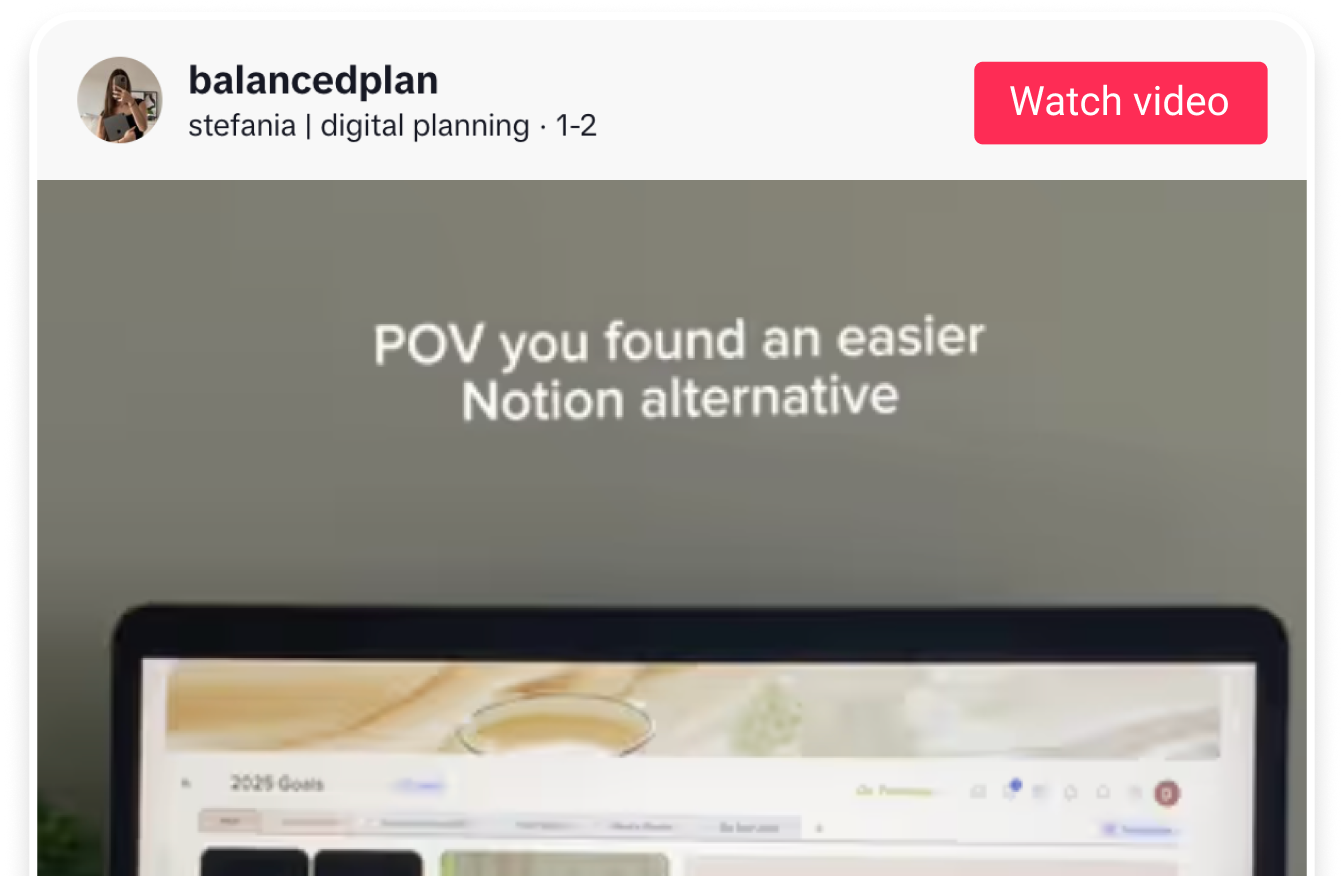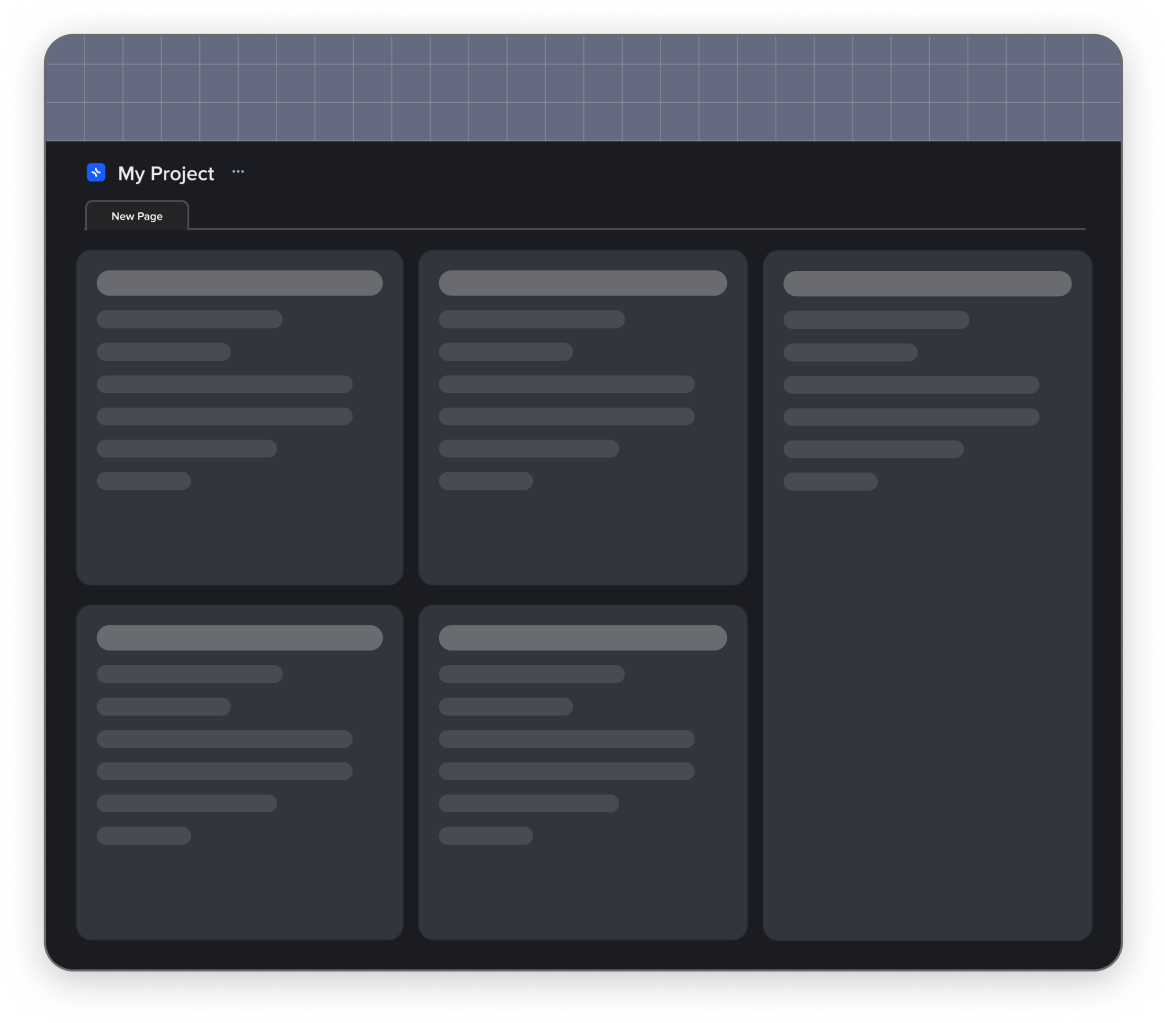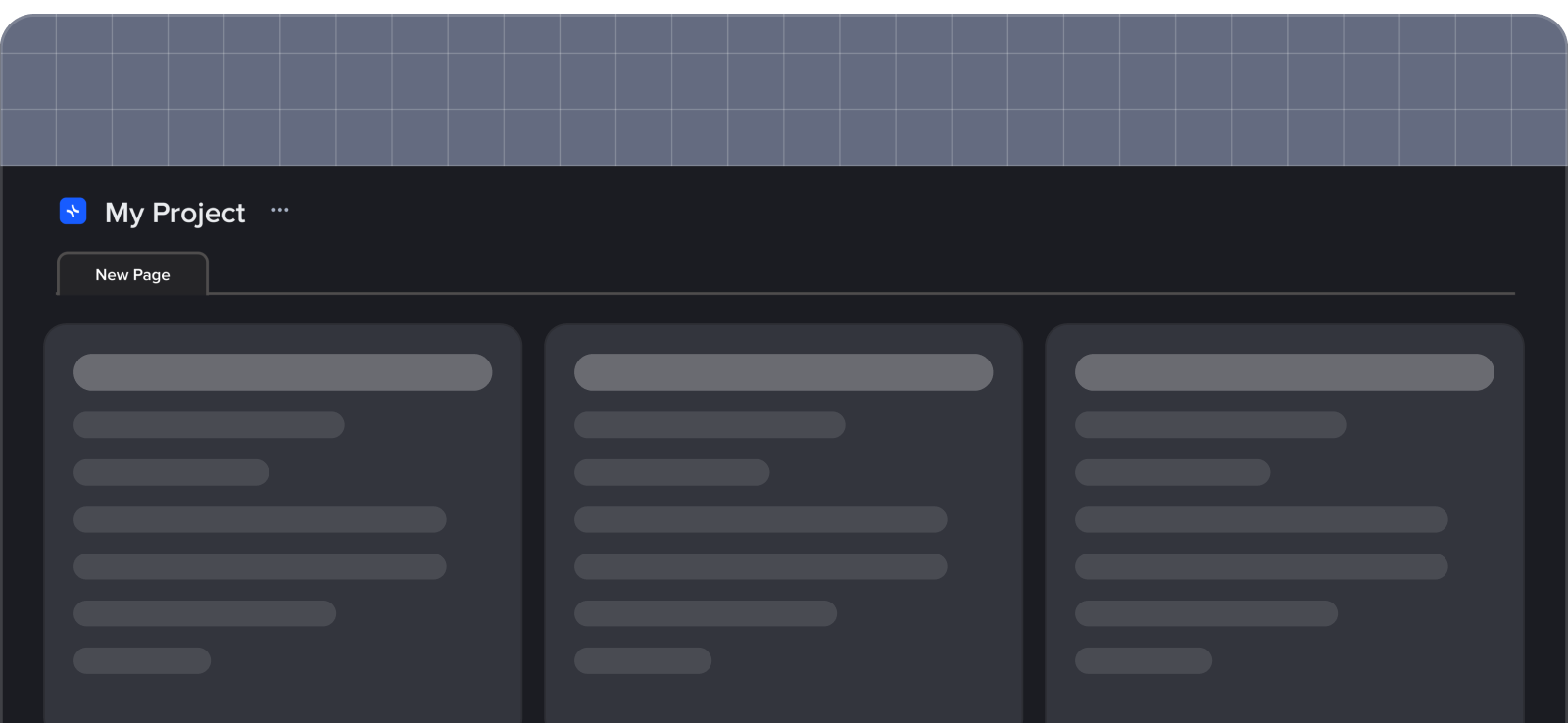How to write effective meeting notes using the xTiles Meeting Notes Template?
Effective meeting notes don’t require much effort and knowledge, yet there are a few secrets that will make everything easier.
Achieving effective meeting minutes and notes is mainly based on two key factors:
- Low effort
If taking notes becomes burdensome, the likelihood of maintaining consistent documentation diminishes.
- High comprehension
Similarly, if the notes are difficult to understand and no one uses them after the meetings, their usefulness diminishes as well.
Now that you know two basic principles to keep in mind when working on your meeting notes, let’s switch to practice. We combined a quick guide on how you can craft meeting notes so well that everyone on your team will like to read them instead of their bed-reading.
To consistently produce effective meeting notes, follow these steps:
Choose your note taker
At the outset of each meeting, establish the individual responsible for taking comprehensive meeting notes and distributing them to participants. While attendees are welcome to take personal notes if desired, having one designated note-taker ensures the availability of a central source of truth.
In a perfect world, the person who can make comprehensive personal notes should be assigned this responsibility regularly. However, people tend to consider their notes, even those work-related, highly personal stuff and rarely spread them among someone except their work buddies.
Many teams and people see this responsibility as a burden, so they would like to assign it to anyone. However, it’s important not to assign the task of taking notes to newcomers as they might not understand all the subtleties of your inner communication. And, since everyone tends to forget, especially when they don’t have to remember something because they rely on meeting notes, the outcome of your meeting might be misleading or even harmful to your team and workflow.
That’s why, if your team is intended to have good meeting notes at all times, you may try assigning different people for each meeting and, after some time, compare the results and find the chosen one.
Note-taker accountability
The designated note taker should take the responsibility of clarifying any uncertainties that arise during the meeting. If conflicting points are expressed, the note-taker should seek clarification and document accurate information.
Sometimes, you can see that something is left undiscussed or unsolved only after a meeting. It’s easy to miss something in a stream of discussions and conversations, especially if you’re actively participating too. In this case, you will need to check or even double-check what is the last decision regarding those questions with your teammates during the meeting or afterward.
By assigning a dedicated note-taker and ensuring their active involvement in capturing accurate and clear information, you can streamline the note-taking process and enhance the usefulness of the documented meeting notes. This approach minimizes effort and maximizes comprehension, ultimately benefiting the entire team in the long run.
Use your meeting agenda as a base for your meeting notes
Every meeting should have an agenda, and this document can serve as a valuable guide for capturing essential information. Taking notes without a structure usually leads to a disorganized and confusing outcome for everyone. By aligning your notes with the agenda items, you create a logical flow and make it easier to comprehend the discussions after the meeting has concluded.
For each agenda item, provide a concise summary of the points discussed and outline the next steps related to that specific topic. This approach ensures that your notes reflect the key takeaways and action items associated with each agenda item.
Remember, a well-crafted meeting agenda serves as the groundwork for effective meeting notes. By using both, you establish a strong framework that enhances the overall productivity and outcomes of your meetings.
Effective meeting outcomes depend on the execution of action items
Assigning and clarifying the next steps during a meeting is crucial to ensure follow-through and progress. While summarizing the discussion is valuable, without clearly defined action items, the outcome can be limited.
Meeting notes play a vital role in documenting and communicating these action items. They provide a record of the agreed-upon tasks and keep the team aligned on the necessary actions to be taken after the meeting concludes.
When documenting action items in your meeting notes, it’s essential to include specific details, such as the responsible person or team assigned to each task and the deadline for completion. By specifying clear parameters, you minimize ambiguity and ensure accountability.
The xTiles allows you to assign the needed person for a specific task quickly. The assignee will get a notification.
The more clarity and specificity you incorporate into your meeting notes regarding action items, the better. This level of detail promotes a shared understanding among team members and facilitates effective task execution once the meeting adjourns.
Remember, meeting notes serve as a valuable reference for the team to review their responsibilities and progress toward the desired outcomes. By documenting action items in a clear and comprehensive manner, you enhance productivity and increase the likelihood of successful follow-through.
Maintain structure in your meeting notes
Keeping a structure in your meeting notes is crucial, even if the meeting itself lacks organization. Consistency ensures that your notes will be helpful to anyone months after the meeting.
An established structure for your notes guarantees clarity and coherence in capturing the meeting’s key points. The xTiles Meeting Notes Template helps to stick to the predefined structure without missing important details.
Here are some steps to help you add even more structure to your meeting notes:
- Start with the subject of your meeting. You may add a link to your agenda or copy the document on the next page to have everything handy during the meeting.
- Add attendees. You may make a numbered list of names or positions of people involved in the meeting, and in the process, use just the appropriate number to save time.
- Summarize discussions. Focus on capturing the main points, decisions made, and any relevant insights or conclusions reached. Be concise but comprehensive in your summaries.
- Note important points and insights that help understand the decisions taken during the meeting. That section of meeting notes is sometimes referred to as the “parking lot.” It serves as a designated space to capture any ideas, tangents, or additional topics that may arise during the meeting but are not directly related to the agenda items. It allows you to acknowledge these points without disrupting the flow of the main discussion. You can revisit and address these items later, ensuring they are not forgotten.
- Also, you may add everything that needs further analysis or clarification during another meeting. That will help prepare an agenda for the next time or give the team something to think about till they meet next time.
- Outline the next steps and action items. Clearly specify the tasks and assign responsible individualsю. You may even set deadlines for each action item. That ensures that everyone is aware of their responsibilities and can track progress effectively.
- If there were some additional materials you were discussing, or you need everyone to take a look at them after the meeting, add them too to the relevant section. Since the xTiles Meeting Notes Template is flexible and highly customizable, you may add as many new sections as you want if the specifications of your team organization require that.
By incorporating this structured approach to taking your meeting notes, you create a clear and organized record of the meeting’s proceedings. It facilitates comprehension, aids in tracking action items, and ensures that important ideas or tangents are captured for future consideration.
Share your meeting notes
The final step in optimizing your meeting notes is the crucial task of sharing them with all attendees. While one person is responsible for taking notes, it’s essential that everyone involved has access to the information discussed and the action items determined. The goal is to ensure alignment and clarity among team members.
By utilizing collaborative tools like xTiles, you can streamline the process of taking notes and automatically share them with all participants once the meeting concludes. This collaborative approach promotes transparency and accountability within the team. Attendees can easily review the meeting notes, refer back to important discussions, and stay informed about the next steps and action items.

